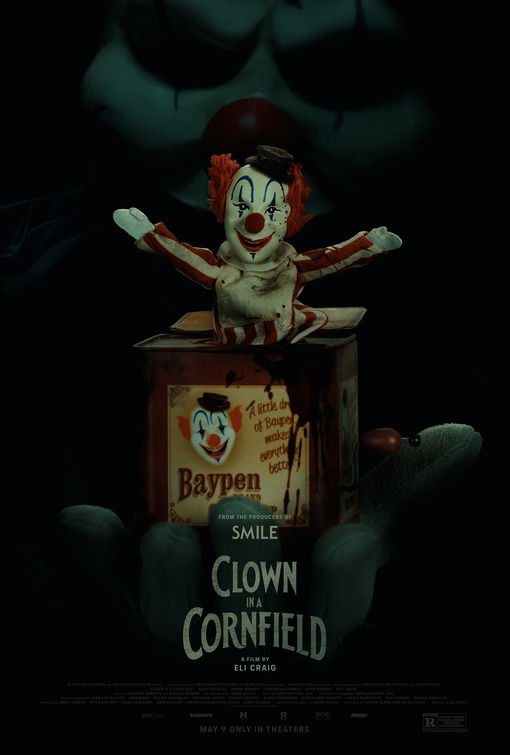Lifestyle
L.A. Affairs: After my wife of 32 years died, I was lost. Could I ever love again?
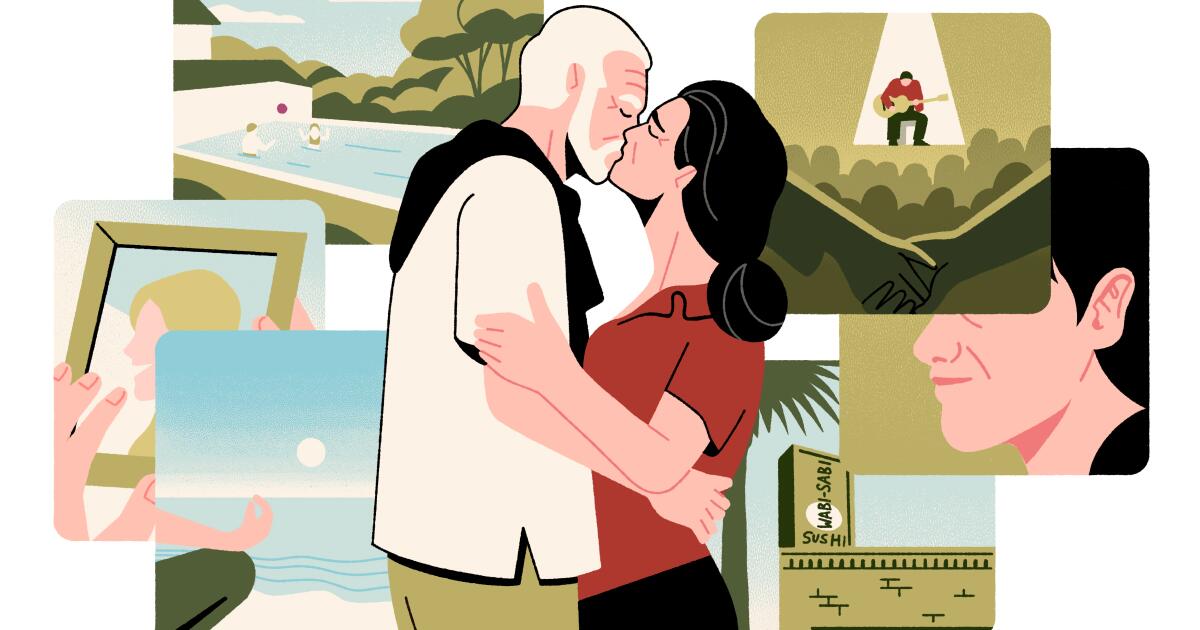
It was my senior year at Van Nuys High. I had noticed her, especially because two of my buddies were drooling over her best friend who cruised the quad of the San Fernando Valley high school with the air of a temptress. Head over heels, my friends did everything they could to lurk in close proximity to her, and I tagged along.
One Friday afternoon, Mike, Larry and I were driving together to Ensenada to surf away the weekend. We took a right off Ventura Boulevard onto Sepulveda Boulevard. By a stroke of luck, we spotted yet passed by their source of attraction walking in the direction of the hills with two girlfriends. A crazy, screeching U-turn later, we were all chatting, and the girls invited us up to my future wife’s house and pool.
We acquiesced and drove up Woodcliff Road, forgetting all about picking up another Mike at his parents’ garage for our trip. Poolside, I ended up staring into the dark brown eyes of my future wife accompanied by her bleach-blond friend, while my friends tried their best to act cool next to the girl they had lusted after for much of the past school semester.
I had an epiphany, realizing she was the most gorgeously attractive girl my 17-year-old self had ever encountered. I wanted to skip the Mexico trip but couldn’t convince the others. So, hours later, we eventually took off to pick up the other Mike. All weekend I dreamed of Monday when I would see her again in school.
The girl with dark brown eyes and I eventually got married — a marriage that lasted 32 years and three kids but ended when she died from breast cancer in 2012.
Confused years ensued. I was devastated yet found first-class therapy from yoga and ocean time. Eventually I started dating — month-long liaisons as well as some for a year or so. My dating go-to spots mostly lined the Venice stretch along Abbot Kinney Boulevard, especially Wabi-Sabi or the Tasting Kitchen. But my heart was truly never looking for short-term hookups. It desired another chance at 30 years with deep, magical, encompassing love. Friends told me I was being unrealistic. I said it was complicated.
I had long refused to be set up, gently turning down any attempts by friends and family to arrange dates or promptings to meet this or that woman. Also, the idea of a dating app was not in the picture. No dis, but I was fortunate enough to meet women in other ways. Then again, nothing stuck. Not until the day when a woman from an infatuation a few years back introduced me to Michele.
For some unknown reason, I happily agreed to her get-together. Maybe it was my state of mind at the time. I can’t explain it. Also, it wasn’t even a date. Or so I told myself. A dinner for three, without even having seen what Michele looked like. All I knew was that my ex cryptically said she was “Filipino or something … Asian anyway,” without me inquiring.
I was early, so I parked outside the restaurant, which was close to the place Michele managed. On the spur of the moment, I walked down to the small shop, peeked in and saw a woman who matched the description. Still, I decided to wait outside until the customers had left, when she would be alone since she was about to close. I even had time to walk back to my car and change from my T-shirt into a clean white dress shirt I had brought with me.
I walked in smiling, introduced myself and asked if she was Michele. I realize it was a bit of an unusual move to just barge in, but, seemingly unfazed, she smiled back. There was this immediate organic connection. We spoke for at least 15 minutes, and the conversation flowed as if we had known each other for decades.
At the restaurant, we talked about everything. Past and present. My ex moved over to talk to some friends as Michele and I carved a path in each other’s eyes, getting down to personal emotions right away as if it was the most natural thing in the world. I’ve never been able to be any other way, and her heart, she later revealed, seemed to blossom in a way her almost 60-year-old well-traveled soul had never experienced.
Michele kissed me as we parted. (She still says I kissed her.) Four days later, we went on our first real date. All this was right before Christmas, and soon after, I was taking a trip to Sweden. I had known her only a week, but as she drove me to the airport, I asked her to join me for a Jason Isbell concert at Walt Disney Concert Hall two weeks later. She said yes.
Once reunited, I gave her a book of mine with the inscription: “You’ve tattooed your name on my heart” … and here we are five years later and married. Her Taiwanese heritage and my Swedish background have cemented a foundation that grows and flourishes beyond all barriers, cherishing what SoCal and the world have to offer.
All relationships encounter challenges. Michele emphatically maintains they make you stronger. Adjust, gain insight and integrity, yet embrace loving compromise. That’s progress. Love transcends it all if you work on it.
The author is a writer who has shuttled among Maui, Sherman Oaks and Stockholm while producing radio and television in collaboration with the BBC. Today his company publishes a current events quiz for schools.
L.A. Affairs chronicles the search for romantic love in all its glorious expressions in the L.A. area, and we want to hear your true story. We pay $400 for a published essay. Email LAAffairs@latimes.com. You can find submission guidelines here. You can find past columns here.

Lifestyle
Brand new books: Stephen King's latest, plus tales of a tired mom and a scary stalker

For plenty of folks, the first Tuesday after Memorial Day marks the first “true” day of summer: Sun! Sand! Baseball! Indigestion! Sunburn! Heatstroke? Reckless whales?!
OK, you’re right, what were we thinking — it’s way too dangerous out there. Much safer to stay indoors, close the blinds and wait for winter and a good book. Good thing this week’s publishing highlights, all fiction, present plenty of opportunities for escape. Why not get away to London or Malaysia, or go spelunking in the mind of a sociopath, all from the thermostat-managed comfort of your own home?
Beware of papercuts, though — that could easily turn into a Stephen King-esque nightmare scenario if you’re not ready.

Autocorrect: Stories, by Etgar Keret, translated by Jessica Cohen and Sondra Silverston
Keret, a doyen of the short story, typically takes his task quite literally: Whatever else it may be, a story by the Israeli writer is quite likely to be short. That’s true as well in Autocorrect, the latest of the Israeli writer’s collections to be translated into English. Most of the stories here last no more than a handful of pages. But don’t mistake his characteristic concision and humor for flippancy. Some of these stories — originally published in Hebrew, in the long shadow of the Oct. 7 attacks and the war in Gaza — hit like a punch to the gut from a passing stranger.

Consider Yourself Kissed, by Jessica Stanley
In at least one sense, Stanley didn’t have to go far to generate drama for her second novel: Its backdrop is the truly tumultuous past decade in British politics, which the Australian expat experienced herself living in London. But noisy as they may be, Brexit, Covid and the revolving door of prime ministers just add flavor to this book’s entree: a romance between a political journalist and an aspiring novelist who struggles to balance their “happily ever after” — complete with cute kids, et al — with the independent sense of self that all this familial contentment threatens to drown.

Never Flinch, by Stephen King
Holly Gibney is back — though it’s not as if she really left for long. Lately the eccentric private detective has rounded into a marquee player in King’s troupe of recurring characters. She has appeared in seven of King’s books in the decade or so since her introduction in Mr. Mercedes, and finally got her own book, titled Holly, in 2023. In this two-pronged thriller, Gibney gets called upon both to protect a women’s rights activist and prevent a mysterious killer from following through on an audacious threat.

Farrar, Straus and Giroux
The South, by Tash Aw
Back in 2010, famed librarian Nancy Pearl slipped a rather audacious declaration into an otherwise innocuous article: “I believe that someday Aw will win a well-deserved Nobel Prize for Literature.” Now, that prediction hasn’t come true yet, but the 50-something Malaysian novelist still has time — and a growing bibliography that has only attracted more passionate fans since then. Now based in the U.K., Aw in his latest novel returns to Malaysia for the story of a family seeking to revive an inherited farm, with the son center-stage, coming of age and into young queer love.

The Stalker, by Paula Bomer
Doughty, the star of Bomer’s latest novel, courts comparisons to Patrick Bateman and Tom Ripley. Manipulative, unbridled by morals, as deceptive with others as they are with themselves — only, it appears that Doughty is also unbridled by brains. The saga of this dim and dastardly striver is streaked through with pitch-black humor.
Lifestyle
SZA Struggles to Make It Up to AMA Stage in Skin-Tight Dress
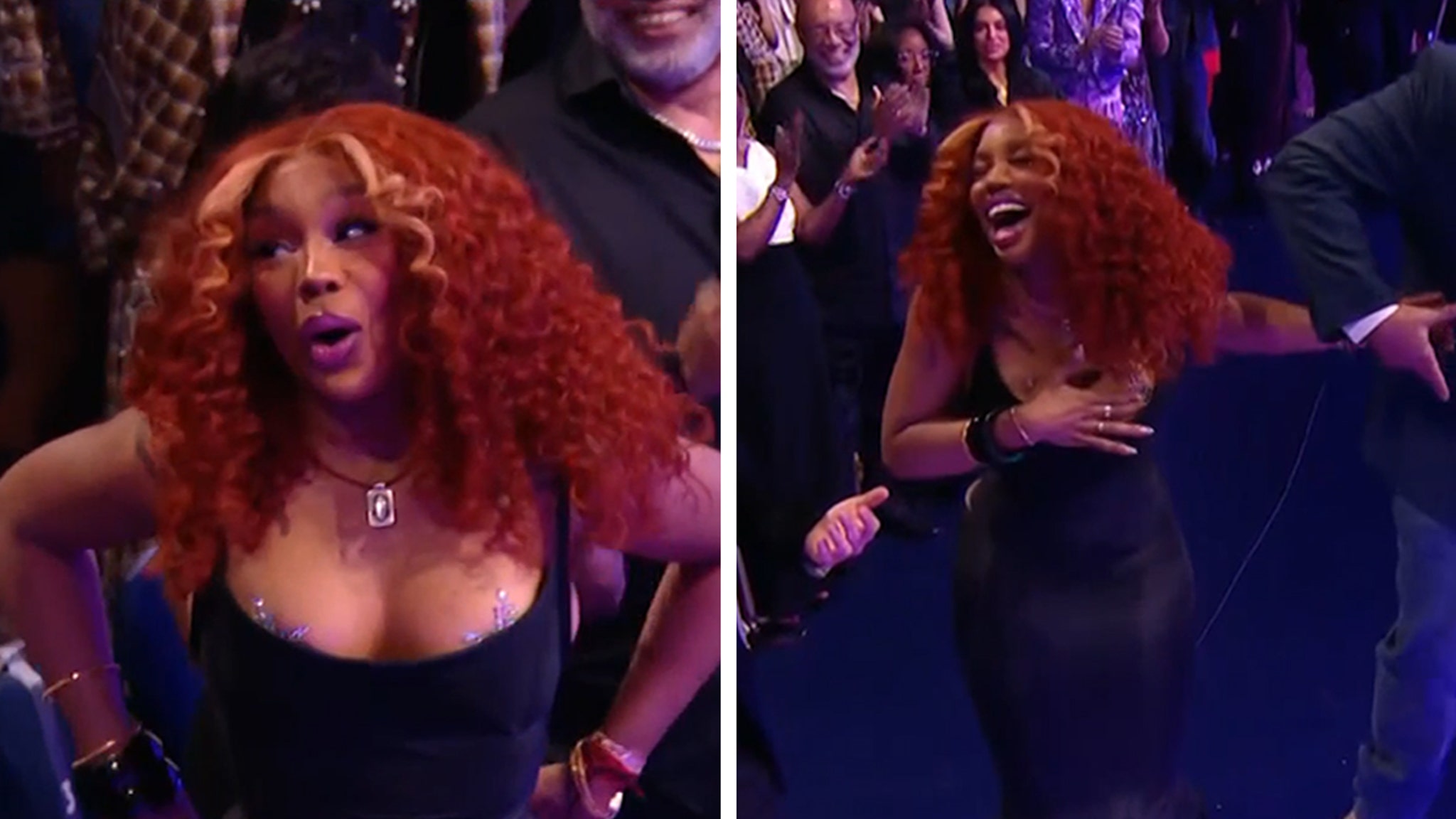
American Music Awards
SZA STRUGGLES ON WAY TO STAGE …
AMAs Dress Too Tight!!!
Published
American Music Awards® clips provided by Dick Clark Productions, LLC and CBS
SZA won big at the American Music Awards Monday night, taking home the trophy for favorite female R&B artist … but she barely made it up the stage to accept her trophy — ’cause her dress was too tight!
Check out the hilarious clip … she’s clearly struggling to walk up the handful of steps to the stage at the Fontainebleau Las Vegas to accept her award … utilizing two men in suits to give her a hand.
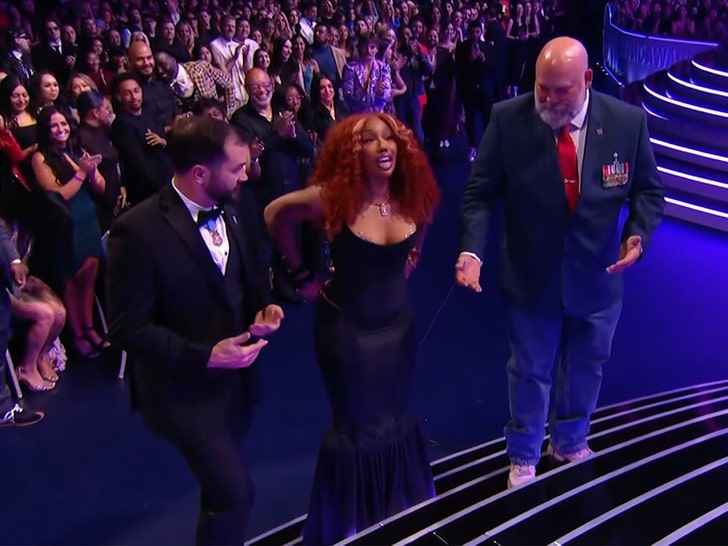
Even then, she’s barely making any progress … and even resorts to hopping up the steps.
The “All The Stars” hitmaker — dressed in a floor-length, skin-tight black gown — seems amused by the tight situation — cracking up as she also grabs her chest to make sure her bedazzled pasties stay put … avoiding giving the audience more of a show than they came for.
She even seems ready to give up … but she persists, and makes it to the microphone to thank her fans and family for their support. She also shouts out Kai Cenat‘s Streamer University program after he handed her the shiny new award.

The AMAs proved to be a stellar night for SZA, ’cause she also took home the prize for favorite R&B song for her 2024 single “Saturn,” beating out Chris Brown, Muni Long, The Weeknd & Playboi Carti and Tommy Richman.
Safe to say SZA’s appearance was certainly no ‘Snooze!’
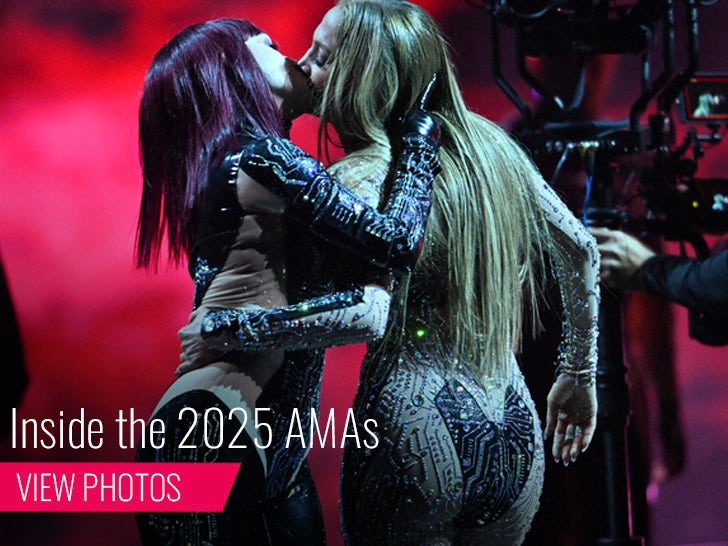
Lifestyle
Marcel Ophuls, who chronicled 20th century conflict and atrocities, dies at 97

Marcel Ophuls believed subjectivity was key to filmmaking and saw documentaries as an antidote to the news. He’s pictured above on May 5, 1987.
Chip Hires/Gamma-Rapho via Getty Images
hide caption
toggle caption
Chip Hires/Gamma-Rapho via Getty Images

Marcel Ophuls believed subjectivity was key to filmmaking and saw documentaries as an antidote to the news. He’s pictured above on May 5, 1987.
Chip Hires/Gamma-Rapho via Getty Images
Filmmaker Marcel Ophuls has died at the age of 97. Recognized as one of the great documentarians of his era, he died on Saturday, as confirmed by his grandson, Andréas-Benjamin Seyfert.
Ophuls demanded — and commanded — his audience’s attention, in 4 plus hour documentaries like The Sorrow and The Pity and Hôtel Terminus.
Ophuls knew that by creating hours-long documentaries, he ran the danger of “not only seeming pretentious, but being pretentious.” But, as he told NPR in 1978, “there’s a relationship between attention span and morality. I think that, if you shorten people’s attention span a great deal, you are left with only the attraction of power.”
Ophuls was born in Germany and his family fled to France to escape the Nazis. They eventually ended up in Hollywood, where his father, the famed director Max Ophuls, found work. His son started out making fiction films, too, but went on to become one of the foremost chroniclers of the atrocities of the 20th century.
The Sorrow and The Pity is Ophuls’ 1969 epic about the Nazi occupation of France. He interviewed former Nazis, French officials who collaborated, members of the Resistance, and average people who simply found ways to get by. Throughout the film, Ophuls appears on camera—patiently drawing confessions from his subjects. The film faced criticism in France for its depiction of the country’s war efforts.
The Sorrow and The Pity became an art house hit, says Patricia Aufderheide, who teaches communications at American University in Washington, D.C. — and it helped create a new kind of documentary.
“It’s a kind of filmmaking where the filmmaker is very present as an investigator into something about the human condition,” she says.
Ophuls told NPR in 1992 that documentaries function as an antidote to news. Subjectivity is key, he said; the goal is “to juxtapose events and people in such a way that individual destinies and collective destinies make us think and reflect about our own roles in life.”
Ophuls was good at putting old Nazis and retired U.S. intelligence workers at their ease, as he does in his 1988 film Hôtel Terminus, about Klaus Barbie — a notorious Nazi — and the Americans who later protected him. When the film crew arrived to set up for interviews, Ophuls stayed in the back of the room, letting the crew chat up the subject.
Judy Karp, the filmmaker’s U.S. sound recordist, says Ophuls would adapt to make the interviewee comfortable. “He would come in as the person that he needed to be in order to get the story out of them and to get the information that he wanted,” Karp says. “He was never false — but it’s like we never knew which Marcel was going to be there.”
For Hôtel Terminus, which won the best documentary feature Oscar in 1988, Ophuls interviewed French writer and philosopher René Tavernier, who lived through the period the film covers. His son, acclaimed director Bertrand Tavernier, described Ophuls as one of the greatest of all filmmakers, not just documentarians.
“He knew that documentary sometimes has to be built as a fiction film,” Tavernier told NPR in an interview before his own passing in 2021. “You have to have interesting characters. You have to have an interesting angle. You have to work on dramatization, progression. At the same time, he was never manipulating the audience.”
His stories were true, but Ophuls thought of himself as an entertainer nonetheless. In 1978, he told NPR that his greatest hero in show business — and yes, he considered himself in show business — was Fred Astaire. The dancer’s “control and structure and balance is so dignified, and so rarified,” he said.
In 1992, he told NPR that his mission was to make the world a better place through his work, going beyond entertainment. “That’s what we live for, isn’t it?” he said. “To try to make it better.”
-

 Movie Reviews1 week ago
Movie Reviews1 week ago‘Nouvelle Vague’ Review: Richard Linklater’s Movie About the Making of Godard’s ‘Breathless’ Is an Enchanting Ode to the Rapture of Cinema
-
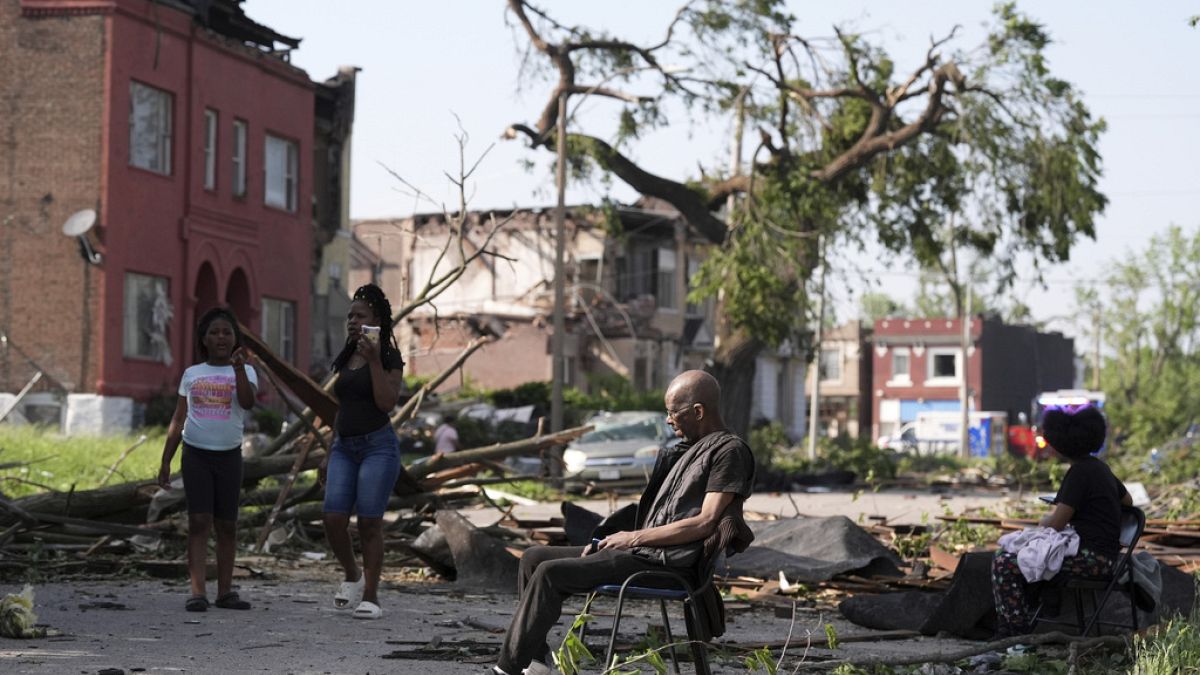
 World1 week ago
World1 week agoSevere storms kill at least 21 across US Midwest and South
-

 News1 week ago
News1 week agoWatch: Chaos as Mexican Navy ship collides with Brooklyn Bridge, sailors seen dangling – Times of India
-

 Politics1 week ago
Politics1 week agoTexas AG Ken Paxton sued over new rule to rein in 'rogue' DAs by allowing him access to their case records
-

 News1 week ago
News1 week agoMaps: 3.8-Magnitude Earthquake Strikes Southern California
-

 Politics1 week ago
Politics1 week agoAfghan Christian pastor pleads with Trump, warns of Taliban revenge after admin revokes refugee protections
-

 Politics1 week ago
Politics1 week agoTrump, alongside first lady, to sign bill criminalizing revenge porn and AI deepfakes
-

 World1 week ago
World1 week agoPortuguese PM’s party set to win general election, fall short of majority

